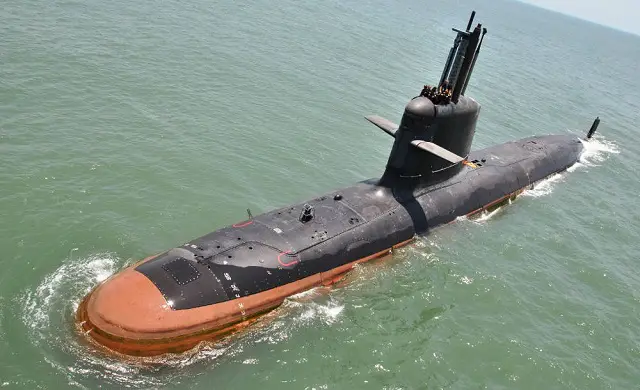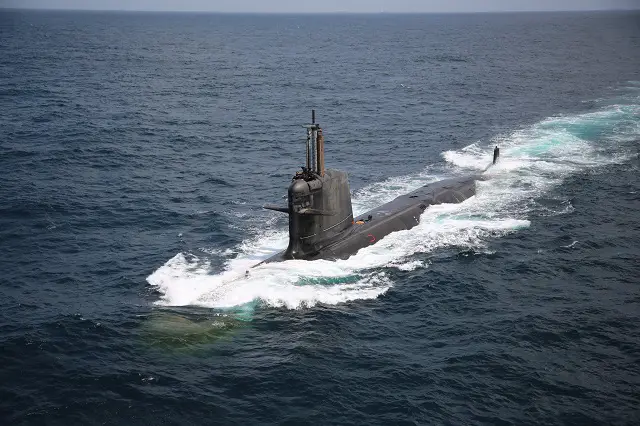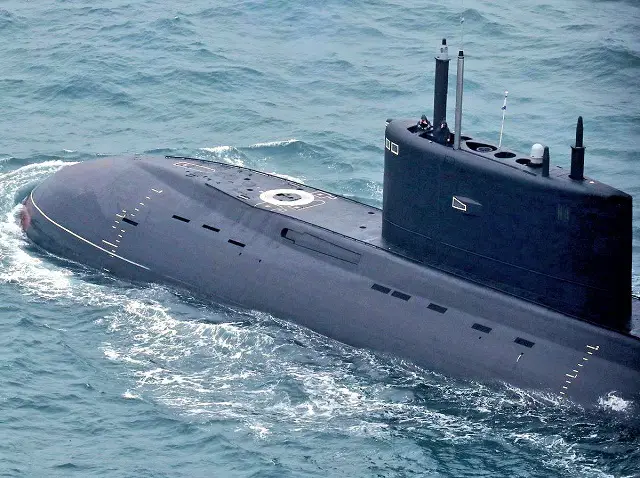Breaking news
Russia may face challenges with diesel submarines on world market - Part 1.
| 2017
|
|
|||
 A Indian Navy Project 877EKM (Kilo-class) diesel-electric submarine A Indian Navy Project 877EKM (Kilo-class) diesel-electric submarine |
|||
|
Domestically-made submarines of projects 877EKM and 636 were supplied to Asia and the Pacific Rim (10 to India of project 877EKM, 12 to China, including four of project 877EKM and eight of project 636, six to Vietnam of project 636.1). However, the attempt in the past decade to sell Russian submarines to South Korea failed as it preferred the German diesel-electric U-boats of project 214 and is building nine of them by license. Malaysia bought two French Scorpene subs and Thailand one Chinese U-boat of project S26N with an option for another two. Pakistan will build by license eight Chinese boats of project S20 which is an export option of project 041 Yuan.
As for the Russian prospects to export submarines to Asia and the Pacific Rim, they were damaged by the decision of strategic partner India to buy six French Scorpenes currently built by license although with a delay by the Mazagaon Dockyard Limited (MDL). The scheduled visit of French President Emmanuel Macron to India in early 2018 can result in a potential sale to the Indian Navy of three additional Scorpene-class submarines produced by the DCNS Company (currently Naval Group). |
|||
|
|
|||
 Maiden sea trial of the first P75 Scorpene Submarine of the Indian Navy INS Kalvari on May 1st 2016. Indian Navy picture. Maiden sea trial of the first P75 Scorpene Submarine of the Indian Navy INS Kalvari on May 1st 2016. Indian Navy picture. |
|||
|
According to preliminary information, in India Macron will meet Prime Minister Narendra Modi and other officials, including Defense Minister Nirmala Sitharaman. High-ranking French officials said the talks would likely focus on the sale of two additional squadrons of Rafale fighter jets and three Scorpene-class submarines as the Indian Navy is extremely interested in increasing the fleet of diesel-electric U-boats which currently comprises 13 units (9 Russian subs of project 877EKM and four German boats of project 209/1500 of the HDW Company). French Defense Minister Florence Parly already held preliminary discussions of the submarine deal during her two-day visit to India which ended on October 28.
It looks like the combination of 6 plus 3 digits has nothing specific. However, in reality they pose a major issue regarding Project 75I worth 500 bln Indian rupees, which has long been discussed in India and envisages the construction of six new non-nuclear submarines with air-independent propulsion by a joint venture organized by a private Indian company and a foreign tender-winning producer. Rosoboronexport arms trader and the Rubin Design Bureau plan to bid and offer to India Amur-1650 subs with air-independent propulsion. The Russian bid could be preferable as cooperation with the Indian-Russian BrahMos Aerospace JV can arm the new Indian submarine with vertically launched Brahmos underwater supersonic missiles which can hit surface and ground targets at a distance of up to 450 km. However, in reality the French bid can easily defeat the Russian one. |
|||
|
|
|||
 Khanderi, the second of the six Scorpene class submarines built locally for the Indian Navy, started sea trials on June 1st, 2017. Indian Navy picture. Khanderi, the second of the six Scorpene class submarines built locally for the Indian Navy, started sea trials on June 1st, 2017. Indian Navy picture. |
|||
|
The Indian Navy agrees to continue licensed production of Scorpenes and another three French non-nuclear boats with air-independent propulsion and a missile complex to hit ground targets after the Mazagaon Dockyard Limited supplies the sixth and final Scorpene by 2021-22.
The Indian Navy command believes the practical implementation of Project 75I can take at least a decade or more. In particular, only in late October the P-75I tender bidders provided answers to the Request for Information (RFI) of the Defense Ministry. It means a ten-year delay. The delivery date of the first submarine is scheduled in 2030-2033, however, as it often happens with Indian military programs, it is likely to be postponed. It looks like the Indian Navy is not interested in the project as much as it was before because in the past years an influential "French lobby" emerged in the Navy command. Nobody wants the MDL shipyard to lose the competences it receives in the implementation of the licensed construction of six French Scorpene-class submarines as it happened in the 1990s with the construction of German submarines of project 209/1500 of the HDW Company. The Indian Navy command believes it is more reasonable and cost-effective to build another three Scorpenes by the time when the final decision on P-75I project is made. © Copyright 2017 TASS. All rights reserved. This material may not be published, broadcast, rewritten or redistributed. Check out the Part 2 of the article at this link. |
|||



























 A Project 636.3 submarine of the Russian Black Sea Fleet transiting in the Dutch EEZ. Royal Netherlands Navy picture.
A Project 636.3 submarine of the Russian Black Sea Fleet transiting in the Dutch EEZ. Royal Netherlands Navy picture.